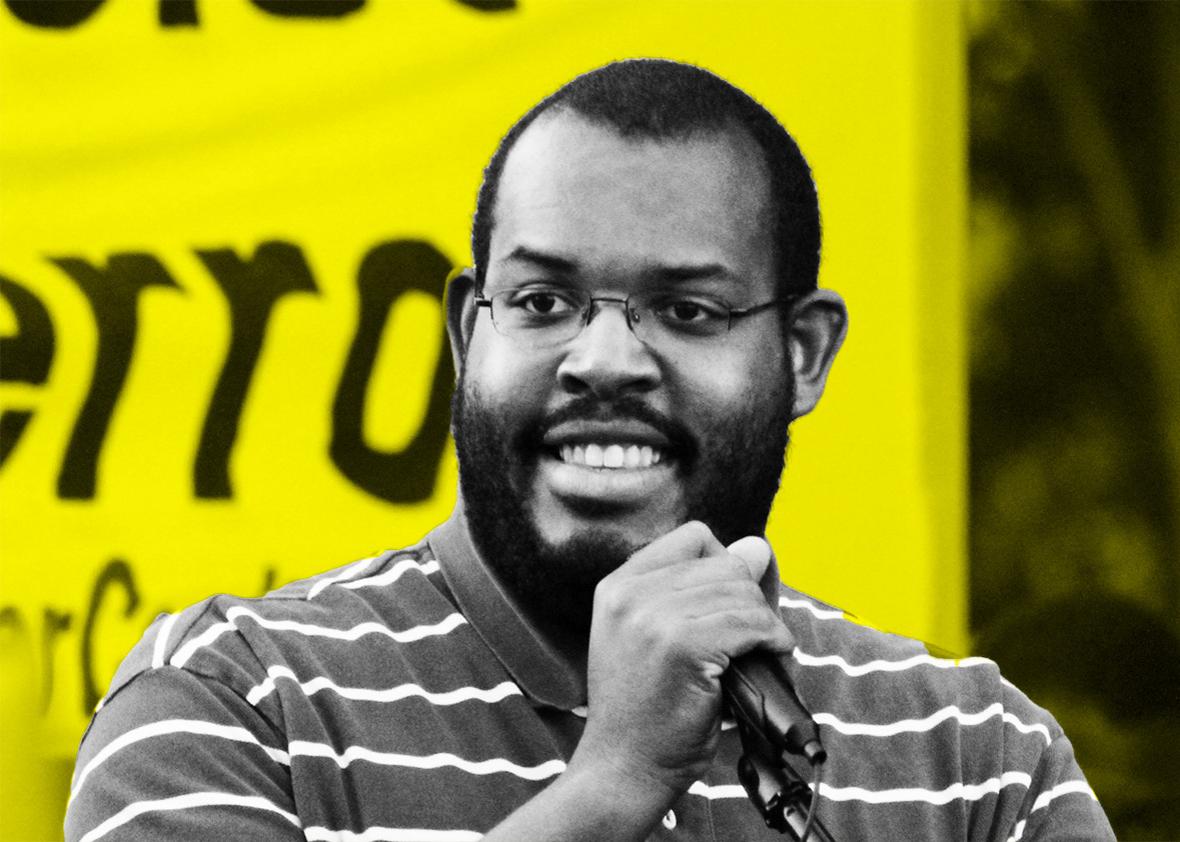Subscribe in iTunes ∙ RSS feed ∙ Download ∙ Play in a New Tab
Slate Plus members: Get your ad-free podcast feed.
This season on Working, we’re speaking to individuals employed in fields potentially imperiled by the Trump presidency. These are the stories of people doing difficult but important jobs—jobs that may get much more difficult and much more important in the years ahead.
Good protests rarely just come together: To the contrary, they often take months of diligent planning. To understand what’s involved in such efforts, we spoke with Eugene Puryear, who has been helping organize a protest in Washington, D.C., on the day of Trump’s inauguration.
ANSWER Coalition, Puryear’s organization, has been preparing to protest for “four-ish months,” meaning that planning for it was underway well before Trump was actually elected. That’s important in part because it takes time to pull people in from around the country, book buses to bring them in, raise funds to pay for those buses, and so on. The electoral outcome has, however, brought a different kind of urgency to the organization’s efforts, not least of all because it knows the eyes of the nation will be on Washington, D.C. To that end, Puryear suggests that this protest presents an opportunity to show others what the ongoing resistance to Trump might entail.
And much of what it entails—it turns out—is meticulous planning. “By and large, the way big social change happens is every individual person taking on whatever little piece they can take on,” says Puryear, who estimates that he volunteers between 12 and 30 hours in a given week. “It can be almost like having a second full-time job,” he claims, especially as the day of a big event approaches. Nailing down what he does with all of that time is a little more difficult, partly because his is a sort of “jack of all trades position,” one in which his responsibilities fluctuate to meet the needs of the moment.
As Puryear details it, his responsibilities have included handling social media outreach, arranging translations for flyers, and coordinating volunteers. But he and his fellow organizers have to ask themselves numerous other questions as well if they want to make sure that everything comes together properly on the day of: “How do you get people there? How do you contact the media? What are all the materials and things you need?” Puryear says, listing just a few of those queries.
To do the kind of work that Puryear does, you also have to be unusually comfortable with meetings. He says that he tries to spend no more than eight hours in a given week in meetings with other organizers, but he also acknowledges that at times a single one of those sessions can itself stretch to eight hours. “It’s the most efficient way to get everything out of the way,” Puryear says. Though he adds, “It can be a bit grueling.”
Despite that, Puryear feels compelled to act. “Who is going to do it if you don’t do it?” he asks.
Then, in a Slate Plus extra Puryear talks to us about how they plan to deal with any counter-protesters—and how ANSWER Coalition prepares for security risks. If you’re a member, enjoy bonus segments and interview transcripts from Working, plus other great podcast exclusives. Start your two-week free trial at Slate.com/workingplus.
Email: working@slate.com
Twitter: @Jacob_Brogan
